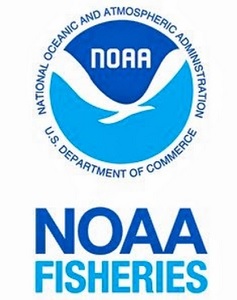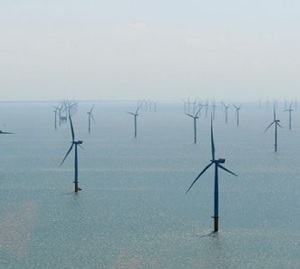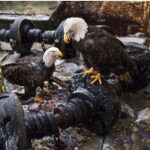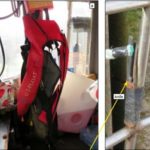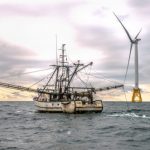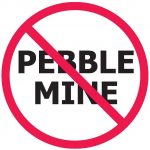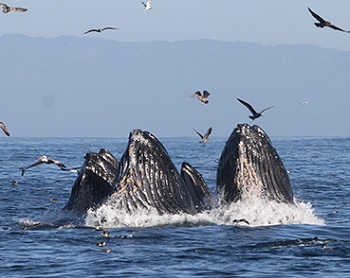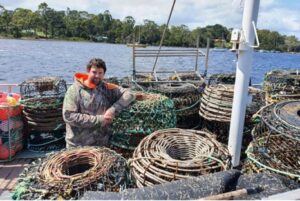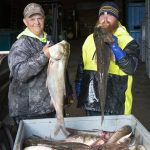Tag Archives: North Atlantic right whales
Lack of fishing prohibitions in ‘grey zone’ could pose risk for right whales, expert says
 One marine conservation expert has questions about the efforts on the part of Fisheries and Oceans after North Atlantic right whales were detected in the Bay of Fundy in recent weeks, including in an area where both Canadian and American fishermen catch lobster. In October, Fisheries and Oceans announced several temporary prohibited fishing areas as the whales were detected in multiple fishing spots across the Maritimes, including in the bay. Some fishing prohibitions for parts of the Bay of Fundy started on Oct. 25 and included the fisheries for crab, herring, mackerel, groundfish, hagfish and lobster. The so-called “grey zone” is an area of disputed water near Grand Manan. Both Canada and the United States have claimed sovereignty over the area, so fishers from both countries harvest there. more, >>CLICK TO READ<< 07:57
One marine conservation expert has questions about the efforts on the part of Fisheries and Oceans after North Atlantic right whales were detected in the Bay of Fundy in recent weeks, including in an area where both Canadian and American fishermen catch lobster. In October, Fisheries and Oceans announced several temporary prohibited fishing areas as the whales were detected in multiple fishing spots across the Maritimes, including in the bay. Some fishing prohibitions for parts of the Bay of Fundy started on Oct. 25 and included the fisheries for crab, herring, mackerel, groundfish, hagfish and lobster. The so-called “grey zone” is an area of disputed water near Grand Manan. Both Canada and the United States have claimed sovereignty over the area, so fishers from both countries harvest there. more, >>CLICK TO READ<< 07:57
Days on the water, nights at Town Office: Harpswell lobsterman advocates for working waterfront on 7 committees
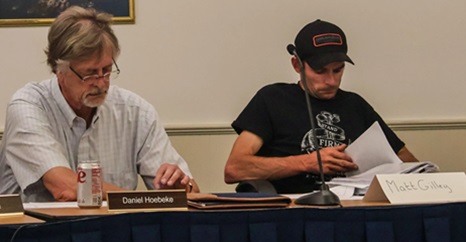 Matt Gilley stood in front of a shelf in his Cundy’s Harbor home. It holds a collection of marine oddities from the bottom of lobster traps, such as unique lobster claws, a seahorse, and a full-sized clam that grew inside a Coke bottle. “The fun part of it is, you don’t know what’s going to come up,” he said. Gilley himself is a rarity in Harpswell. In a town with 216 miles of coastline and “working waterfront” on many local signs, he is one of a small group of commercial lobstermen involved in town government, spending his mornings on the water and his evenings advocating for those who work on it. “I want to see lobstering continue, and the only way for that to continue is for there to be another generation,” he said. “If I can do anything to conserve what little we have left so other people can do it, I’m going to do it.” Photos, more, >>CLICK TO READ<< 09:10
Matt Gilley stood in front of a shelf in his Cundy’s Harbor home. It holds a collection of marine oddities from the bottom of lobster traps, such as unique lobster claws, a seahorse, and a full-sized clam that grew inside a Coke bottle. “The fun part of it is, you don’t know what’s going to come up,” he said. Gilley himself is a rarity in Harpswell. In a town with 216 miles of coastline and “working waterfront” on many local signs, he is one of a small group of commercial lobstermen involved in town government, spending his mornings on the water and his evenings advocating for those who work on it. “I want to see lobstering continue, and the only way for that to continue is for there to be another generation,” he said. “If I can do anything to conserve what little we have left so other people can do it, I’m going to do it.” Photos, more, >>CLICK TO READ<< 09:10
Vineyard Wind Installed the Largest Offshore Turbines in the World. Were They Ready for Primetime?
 When Vineyard Wind completed the installation of the first GE Vernova Haliade-X 13-megawatt wind turbine in the waters southwest of Nantucket in October 2023, the company trumpeted it as “the largest turbine in the western world.” It was supposed to be one of the 62 turbines that would make up the first large-scale, commercial offshore wind farm in the United States. But just nine months later, the project has been suspended by the federal government after the now infamous turbine blade failure on July 13th that left Nantucket’s beaches and the waters surrounding the island littered with fiberglass and styrofoam debris that is still being recovered. While offshore wind energy production has a decades-long track record in Europe and Asia, the Vineyard Wind project was the first of its kind in the United States, and the turbines Vineyard Wind is installing are larger and more powerful than any that have come before it. Photos, more, >>CLICK TO READ<< 14:55
When Vineyard Wind completed the installation of the first GE Vernova Haliade-X 13-megawatt wind turbine in the waters southwest of Nantucket in October 2023, the company trumpeted it as “the largest turbine in the western world.” It was supposed to be one of the 62 turbines that would make up the first large-scale, commercial offshore wind farm in the United States. But just nine months later, the project has been suspended by the federal government after the now infamous turbine blade failure on July 13th that left Nantucket’s beaches and the waters surrounding the island littered with fiberglass and styrofoam debris that is still being recovered. While offshore wind energy production has a decades-long track record in Europe and Asia, the Vineyard Wind project was the first of its kind in the United States, and the turbines Vineyard Wind is installing are larger and more powerful than any that have come before it. Photos, more, >>CLICK TO READ<< 14:55
Vineyard Wind crisis: Fishermen blast feds for saying they don’t care about whales
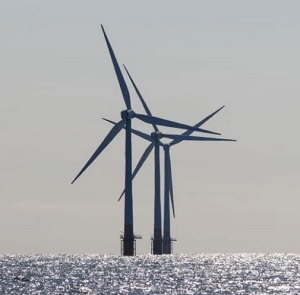 The claim came during a Thursday hearing in Boston federal appeals court as two fishing groups look to toss Vineyard Wind’s underlying permit, arguing regulators failed to analyze how the project would impact the environment and fishermen. “The alliance, as a trade association representing the fishing industry, does not have any interest in protecting right whales,” said attorney Thekla Hansen-Young, representing the Department of the Interior, the National Marine Fisheries Service, among other federal agencies, in the dispute. Hansen-Young was referring to the Responsible Offshore Development Alliance, one of the groups fighting the feds and Vineyard Wind. Seafreeze Shoreside Inc. is the other. more, >>CLICK TO READ<< 13:06
The claim came during a Thursday hearing in Boston federal appeals court as two fishing groups look to toss Vineyard Wind’s underlying permit, arguing regulators failed to analyze how the project would impact the environment and fishermen. “The alliance, as a trade association representing the fishing industry, does not have any interest in protecting right whales,” said attorney Thekla Hansen-Young, representing the Department of the Interior, the National Marine Fisheries Service, among other federal agencies, in the dispute. Hansen-Young was referring to the Responsible Offshore Development Alliance, one of the groups fighting the feds and Vineyard Wind. Seafreeze Shoreside Inc. is the other. more, >>CLICK TO READ<< 13:06
Gliders: Scientists add more underwater robots to monitor North Atlantic right whales
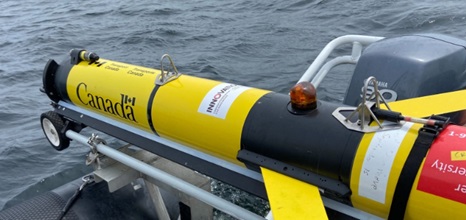 In the race to protect the endangered species, researchers are bringing in more underwater robots—unmanned vehicles known as gliders that slowly patrol the Gulf of St. Lawrence, passively listening for whales. Gliders can stay at sea for months, move far offshore and work in all types of weather. They’re equipped with underwater microphones that scientists use to track the animals. The team added a third glider to its fleet this summer, expanding its ability to monitor whales’ whereabouts by sea and air. It’s collaborative effort involving researchers from University of New Brunswick, Ocean Tracking Network, Transport Canada and Woods Hole Oceanographic. more, >>CLICK TO READ<< 19:37
In the race to protect the endangered species, researchers are bringing in more underwater robots—unmanned vehicles known as gliders that slowly patrol the Gulf of St. Lawrence, passively listening for whales. Gliders can stay at sea for months, move far offshore and work in all types of weather. They’re equipped with underwater microphones that scientists use to track the animals. The team added a third glider to its fleet this summer, expanding its ability to monitor whales’ whereabouts by sea and air. It’s collaborative effort involving researchers from University of New Brunswick, Ocean Tracking Network, Transport Canada and Woods Hole Oceanographic. more, >>CLICK TO READ<< 19:37
Acadie-Bathurst MP Serge Cormier says he can no longer defend his government on right whale protection issue
 A northeast New Brunswick Liberal MP is joining the Maritime Fishermen’s Union in calling for a better balance between protecting endangered North Atlantic right whales and allowing commercial fishing operations. Acadie-Bathurst MP Serge Cormier criticized his government for extensive closures of fishing zones that he warned could result in “disastrous consequences” and economic losses of $25 to 30 million. “While we are trying to save an endangered species, these extreme measures are actually endangering our fishing industry and coastal communities,” Cormier said in a statement released Thursday. “I can no longer defend my government on this issue. I stand with the fishermen, the lobster and crab industry, the factory owners and workers, and the community members.” more, >>CLICK TO READ<< 13:14
A northeast New Brunswick Liberal MP is joining the Maritime Fishermen’s Union in calling for a better balance between protecting endangered North Atlantic right whales and allowing commercial fishing operations. Acadie-Bathurst MP Serge Cormier criticized his government for extensive closures of fishing zones that he warned could result in “disastrous consequences” and economic losses of $25 to 30 million. “While we are trying to save an endangered species, these extreme measures are actually endangering our fishing industry and coastal communities,” Cormier said in a statement released Thursday. “I can no longer defend my government on this issue. I stand with the fishermen, the lobster and crab industry, the factory owners and workers, and the community members.” more, >>CLICK TO READ<< 13:14
Ropeless gear program will keep P.E.I. snow crab harvester on water despite whale sightings
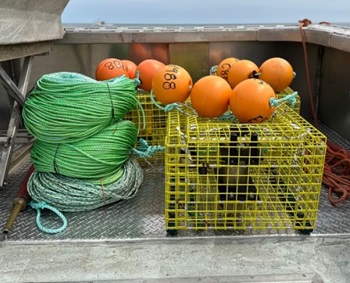 Alden Gaudet fishes snow crab out of Tignish Run and is close to reaching his quota for the season. The first sighting of a right whale in Canadian waters in 2024 came last Friday. A whale that has been dubbed Shelagh was seen northeast of New Brunswick and northwest of the Magdalen Islands. After that led to a partial closure of fishing grounds near his traps, Gaudet reached out to CanFish, a free gear-lending program based in Halifax that’s operated by the Canadian Wildlife Federation. Photos, more, >>CLICK TO READ<< 17:36
Alden Gaudet fishes snow crab out of Tignish Run and is close to reaching his quota for the season. The first sighting of a right whale in Canadian waters in 2024 came last Friday. A whale that has been dubbed Shelagh was seen northeast of New Brunswick and northwest of the Magdalen Islands. After that led to a partial closure of fishing grounds near his traps, Gaudet reached out to CanFish, a free gear-lending program based in Halifax that’s operated by the Canadian Wildlife Federation. Photos, more, >>CLICK TO READ<< 17:36
P.E.I.’s snow crab season wrapping up as right whale protection begins
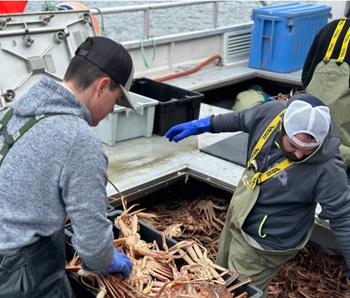 An early start to the season is paying off for many P.E.I. snow crab fishers, with good catches and better prices than last year. An added bonus: for the second straight year, most will have caught their quota before endangered North Atlantic right whales move into the Gulf of St. Lawrence, prompting protective measures to prevent entanglement in fishing gear. Alden Gaudet said fishers are much better prepared this year than they were two years ago in case of closures due to right whales. “This year, we’ve lobbied to be able to immediately remove our buoys from these traps and use this ropeless, on-demand [system, without having to wait 48 hours to reset back in these areas. So it will make things a lot easier,” he said. Photos, Video, more, >>CLICK TO READ<< 07:42
An early start to the season is paying off for many P.E.I. snow crab fishers, with good catches and better prices than last year. An added bonus: for the second straight year, most will have caught their quota before endangered North Atlantic right whales move into the Gulf of St. Lawrence, prompting protective measures to prevent entanglement in fishing gear. Alden Gaudet said fishers are much better prepared this year than they were two years ago in case of closures due to right whales. “This year, we’ve lobbied to be able to immediately remove our buoys from these traps and use this ropeless, on-demand [system, without having to wait 48 hours to reset back in these areas. So it will make things a lot easier,” he said. Photos, Video, more, >>CLICK TO READ<< 07:42
NOAA/NMFS Ignores Dangerous Sound Levels from Pile Driving – By Jim Lovgren
 A new recently released report from Rand Acoustics, LLC scientifically documented that the stated sound levels created by the pile driving of wind turbine stanchions into the seafloor is much louder than the NOAA approved levels. In a study dated November 2, 2023, the researchers used acoustic listening devises to record the underwater sounds being created from piledriving by the crane ship “Orion” in the Vineyard wind BOEM lease area OCS-A 0501 southwest of Nantucket Island. Prior to this research, Rand Acoustics documented the underwater sound levels being produced by some of the research vessels using sonar and seismic devises to examine and document the seafloor prior to turbine construction. This research proved that the sound levels produced by these research vessels exceeded the stated sound levels approved by NOAA/NMFS to protect marine mammals and resulted in the documentary film “Thrown to the wind”. more, >>click to read<< 11:28
A new recently released report from Rand Acoustics, LLC scientifically documented that the stated sound levels created by the pile driving of wind turbine stanchions into the seafloor is much louder than the NOAA approved levels. In a study dated November 2, 2023, the researchers used acoustic listening devises to record the underwater sounds being created from piledriving by the crane ship “Orion” in the Vineyard wind BOEM lease area OCS-A 0501 southwest of Nantucket Island. Prior to this research, Rand Acoustics documented the underwater sound levels being produced by some of the research vessels using sonar and seismic devises to examine and document the seafloor prior to turbine construction. This research proved that the sound levels produced by these research vessels exceeded the stated sound levels approved by NOAA/NMFS to protect marine mammals and resulted in the documentary film “Thrown to the wind”. more, >>click to read<< 11:28
Maine Lobstermen’s Association Releases Statement on Final Wind Energy Area
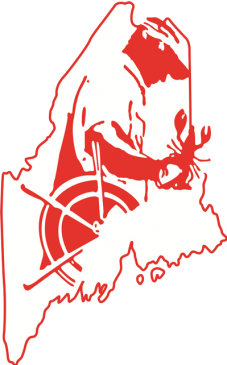 “The Maine Lobstermen’s Association (MLA) appreciates that BOEM’s Final Wind Energy Area (WEA) removes Lobster Management Area 1. “MLA worked tirelessly with Maine’s fishing industry, our congressional delegation, and Governor Mills to ensure prime lobster fishing grounds are spared from industrial development. We are proud that so many lobstermen have constructively engaged in this process and grateful that the Bureau of Ocean Energy Management has listened to their concerns. “But there is still much work to do. Secondary Area C, an area where many endangered North Atlantic right whales are sighted, is included in the Final Wind Energy Area. MLA remains steadfast in its position that no area of the Gulf of Maine should be industrialized with offshore wind. There are still too many unanswered questions about the impacts of offshore wind on the marine environment, commercial fishermen and our fishing heritage.” https://www.mainelobstermen.org/ 12:57
“The Maine Lobstermen’s Association (MLA) appreciates that BOEM’s Final Wind Energy Area (WEA) removes Lobster Management Area 1. “MLA worked tirelessly with Maine’s fishing industry, our congressional delegation, and Governor Mills to ensure prime lobster fishing grounds are spared from industrial development. We are proud that so many lobstermen have constructively engaged in this process and grateful that the Bureau of Ocean Energy Management has listened to their concerns. “But there is still much work to do. Secondary Area C, an area where many endangered North Atlantic right whales are sighted, is included in the Final Wind Energy Area. MLA remains steadfast in its position that no area of the Gulf of Maine should be industrialized with offshore wind. There are still too many unanswered questions about the impacts of offshore wind on the marine environment, commercial fishermen and our fishing heritage.” https://www.mainelobstermen.org/ 12:57
Maine Lobstermen’s Association tallies its victories, future risks at annual meeting
 “Every year, there is a new issue facing the industry,” Tristan Porter, president of the Maine Lobstermen’s Association (MLA), said as the trade organization opened its 70th annual meeting during the Maine Fishermen’s Forum on March 1. For lobstermen and the commercial lobster fishery, there are three big issues facing the industry: protecting North Atlantic right whales, maintaining a sustainable fishery and the federal leasing in the Gulf of Maine for floating offshore wind energy — plus the myriad of federal and state regulations and public hearings and, at times, lawsuits, that go with them. 8 photos, more, >>click to read<< 08:44
“Every year, there is a new issue facing the industry,” Tristan Porter, president of the Maine Lobstermen’s Association (MLA), said as the trade organization opened its 70th annual meeting during the Maine Fishermen’s Forum on March 1. For lobstermen and the commercial lobster fishery, there are three big issues facing the industry: protecting North Atlantic right whales, maintaining a sustainable fishery and the federal leasing in the Gulf of Maine for floating offshore wind energy — plus the myriad of federal and state regulations and public hearings and, at times, lawsuits, that go with them. 8 photos, more, >>click to read<< 08:44
War On Maine’s Lobstermen?
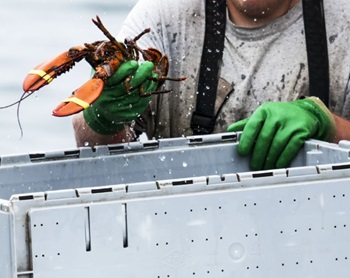 If you want an emblem of the “man’s man,” larger than life, daring and doing, self-reliant, depend-on-nature, a make-it-happen guy, who rises with the dawn, works hard, asks little, wants little, values independence, and will never fly a desk… that’s the Maine lobsterman or woodsman. Now, they are being scapegoated for wind farms – or some other cause – apparently killing Right whales. Go figure. A more cynical irony is hard to imagine. The wind subsidy crowd, sure they will make money off the taxpayer-funded “green wave” with gold at the end of a government-funded rainbow, has decided – in Washington and “activist cells” around America – to hit Maine’s lobstermen. Wrong. more, >>click to read<< by Robert B. Charles 07:17
If you want an emblem of the “man’s man,” larger than life, daring and doing, self-reliant, depend-on-nature, a make-it-happen guy, who rises with the dawn, works hard, asks little, wants little, values independence, and will never fly a desk… that’s the Maine lobsterman or woodsman. Now, they are being scapegoated for wind farms – or some other cause – apparently killing Right whales. Go figure. A more cynical irony is hard to imagine. The wind subsidy crowd, sure they will make money off the taxpayer-funded “green wave” with gold at the end of a government-funded rainbow, has decided – in Washington and “activist cells” around America – to hit Maine’s lobstermen. Wrong. more, >>click to read<< by Robert B. Charles 07:17
Maine DMR Receives $17 Million to Support Maine’s Lobster Industry, Improve Flawed Right Whale Data
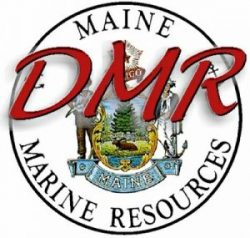 Governor Janet Mills and Department of Marine Resources (DMR) Commissioner Patrick Keliher today announced that Maine has received $17,252,551 from the National Oceanic and Atmospheric Administration (NOAA) to help improve data on endangered North Atlantic right whales (NARW). The money was the result of The Consolidated Appropriations Act passed by Congress in December of 2022 which established a $26 million fund for states with lobster fisheries. This fund is administered by the Atlantic States Marine Fisheries Commission which divided the money among states based on active lobster harvesters. “The goal of this research is to collect data that tells us what is happening in the Gulf of Maine, so we can be protective of whales in a way that also doesn’t devastate Maine’s critically important lobster industry,” said DMR Commissioner Patrick Keliher. more,>>Click to read<< 16:52
Governor Janet Mills and Department of Marine Resources (DMR) Commissioner Patrick Keliher today announced that Maine has received $17,252,551 from the National Oceanic and Atmospheric Administration (NOAA) to help improve data on endangered North Atlantic right whales (NARW). The money was the result of The Consolidated Appropriations Act passed by Congress in December of 2022 which established a $26 million fund for states with lobster fisheries. This fund is administered by the Atlantic States Marine Fisheries Commission which divided the money among states based on active lobster harvesters. “The goal of this research is to collect data that tells us what is happening in the Gulf of Maine, so we can be protective of whales in a way that also doesn’t devastate Maine’s critically important lobster industry,” said DMR Commissioner Patrick Keliher. more,>>Click to read<< 16:52
Will small boats soon have to slow down off NC to protect North Atlantic Right Whales?
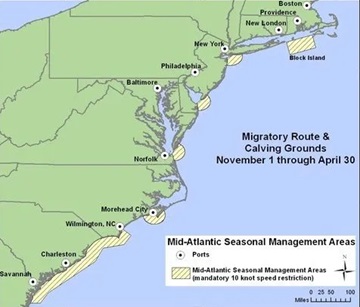 Vessel speed limits to help avoid fatal collisions between ships and one of the most endangered animals in the world that has fallen to around 350 individuals have gone back into effect off the U.S. Southeastern coast, including parts of North Carolina. The seasonal-management areas, or SMAs, limit the speed of most vessels 65 feet or longer to 10 knots, about 11.5 mph, in areas known to have heavy ship traffic that are also migratory routes or known calving grounds for the North Atlantic right whale. The go-slow zones, which run from November through April and have been in effect for more than a decade, extend about 20 nautical miles, or 23 miles, offshore and include areas around Morehead City and Beaufort and within 23 miles from shore between Wilmington and Brunswick, Ga. >>click to read<< 15:46
Vessel speed limits to help avoid fatal collisions between ships and one of the most endangered animals in the world that has fallen to around 350 individuals have gone back into effect off the U.S. Southeastern coast, including parts of North Carolina. The seasonal-management areas, or SMAs, limit the speed of most vessels 65 feet or longer to 10 knots, about 11.5 mph, in areas known to have heavy ship traffic that are also migratory routes or known calving grounds for the North Atlantic right whale. The go-slow zones, which run from November through April and have been in effect for more than a decade, extend about 20 nautical miles, or 23 miles, offshore and include areas around Morehead City and Beaufort and within 23 miles from shore between Wilmington and Brunswick, Ga. >>click to read<< 15:46

Biden-Harris Administration Announces $82 Million For Endangered North Atlantic Right Whales
Today, the Department of Commerce and NOAA announced next steps to conserve and recover endangered North Atlantic right whales with $82 million in funding from the Inflation Reduction Act — the largest climate and conservation investment in history. This announcement comes during Climate Week and is part of the $2.6 billion framework to invest in coastal resilience that NOAA announced earlier this year. North Atlantic right whales are approaching extinction with fewer than 350 individuals remaining, including fewer than 70 reproductively active females. Today’s funding provides an unprecedented opportunity to address the primary threats to the species — entanglements in fishing gear and vessel strikes — with new technologies and approaches. >>click to read<< 12:41
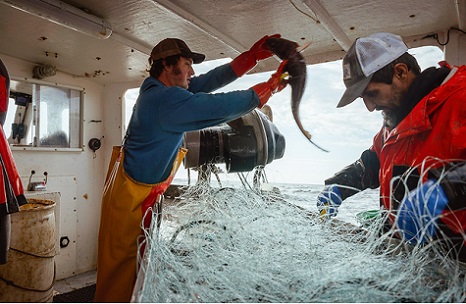
Experts fear American fishing industry, boating at risk as Biden prioritizes climate, green energy
The Biden administration has prioritized green energy at the expense of endangered whales and the U.S. fishing industry with regulation that limits both commercial fishing and recreational boating, according to experts. As they are imposing more regulations, they are also promoting offshore wind, which is actually harming commercial and recreational boating and potentially killing whales, Brady and Lapp said. “They positioned us as being these evildoers and now, 20 years later, whales are dropping dead like pigeons in Manhattan,” Brady said. “Here commercial fishermen and coastal communities are at the front line of fighting to protect the ocean itself, and we have crickets from virtually every NGO.” Video, >>click to read<< 09:09

Green Groups Turn a Blind Eye to Mysterious Increase in Whale Deaths
Several environmentalist groups campaign against offshore oil and gas projects because of their ecological impacts, but those same groups appear to apply less scrutiny to the potential impacts of offshore wind developments. The Sierra Club, the League of Conservation Voters (LCV) and Greenpeace have all advocated for East Coast offshore wind projects amid the increase in whale deaths after slamming offshore oil and gas projects for their environmental impacts. The National Oceanic and Atmospheric Administration (NOAA) has declared “unusual mortality events” for humpback and North Atlantic right whales since 2016 and 2017, respectively, a timeline which generally coincides with the start of offshore wind development off of the East Coast in 2016, according to NOAA’s website. >>click to read<< 12:09

Fall lobster fishers hoping for a prosperous season
“We always look forward to going fishing,” said Mark Arsenault, president of the Prince County Fishermen’s Association. “It’s a gamble, you look to see if you’ve got a winning hand or not.” While prices have been looking good in the lead up to the season that starts on Aug. 9, one concern on the minds of fishers is if there will be any more grid closures should any more North Atlantic Right Whales be spotted in the Gulf of St. Lawrence. “There’s an area that’s closed and it looks like it’s going to be closed until November,” said Mr Arsenault. “It’s deep water, from the 24/25 line to probably close to Miminegash. We’re trying to get a two week closure instead of a seasonal closure, but time will tell how that will go.” >click to read< 08:54
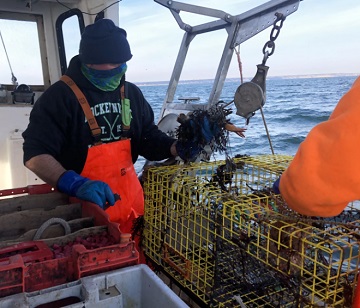
A discussion – Costs of using ropeless fishing gear could sink MA lobster fishery: new report
Experts often say the lobster fishery will have to move to innovative “ropeless” fishing gear to protect North Atlantic right whales from entanglement. There fewer than 340 of the critically endangered whales left. But a new report says Massachusetts lobstermen may be headed for troubled economic waters if they make the switch. But here’s what’s really crazy: the state found that even if lobstermen were just given the on-demand gear for free, using government and nonprofit subsidies, they would still go from making $15 million per year in revenue to just $2 million in revenue per year. And the biggest impacts would be on smaller, more independent operators. I talked to the report author about this, Noah Oppenhiem. He said for lobstermen that only fish only a couple traps per vertical line, they’d go from needing 6 and a half minutes to haul up some lobsters to 11 and a half minutes. >click to read< 11:56
Mass DMF’s On-Demand Fishing Gear Economic Modeling Report Released – >Click to read<

Mass DMF’s On-Demand Fishing Gear Economic Modeling Report Released
The Massachusetts Division of Marine Fisheries (DMF) has completed the second phase of a two-year project, funded by the National Fish and Wildlife Foundation in partnership with the National Oceanic and Atmospheric Administration, to develop the first-of-its-kind evaluation of the operational costs of on-demand fishing gear technology by Massachusetts lobster fishermen. On-demand fishing gear, commonly known as ropeless fishing gear, replaces traditional vertical buoy lines, which can result in entanglements with marine mammals including North Atlantic right whales, with new gear retrieval and marking methods. Most on-demand fishing gear systems consist of submerged buoyancy devices that are activated using time-release mechanisms or acoustic signals transmitted from the surface. Click the links inside for the report. >click to read< 15:47
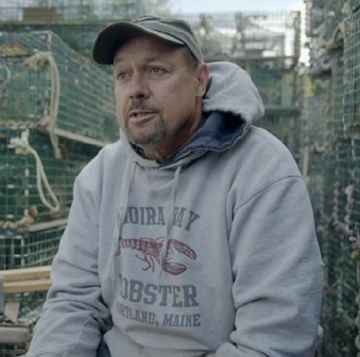
Lobster industry says regulations to save right whales will push them out of business
Lobsters support about 15,000 jobs and contribute more than a billion dollars to the Maine economy. And yet the industry sees itself in an existential battle, pitted against a rare species fighting its own existential battle. North Atlantic right whales, critically endangered, fewer than 350 individuals remain. And they are dying at a devastating rate. Janet Coit, Assistant Administrator of Fisheries, National Oceanic and Atmospheric Administration: If we don’t stabilize and begin the recovery, they will be gone within a couple of decades. They will be extinct. They will be wiped off this Earth. And we want to do everything we can to prevent that from happening. >video< 10:30
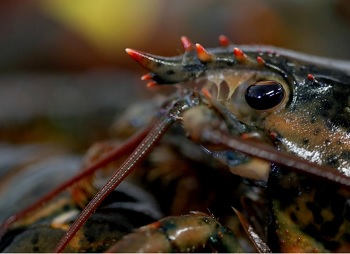
After court victory, Maine lobster industry expects status quo for a few more years
The Maine lobster industry scored a major victory last month, when a federal appeals court ruled that the scientific assumptions used to regulate fishing and protect endangered North Atlantic right whales went too far. That means the status quo for Maine fishermen should remain for several more years. “The gear markings, weak links and other steps the fishery has taken in attempt to reduce entanglement risks will stay in place for the foreseeable future,” says Patrice McCarron of the Maine Lobstermen’s Association. >click to read< 09:35

Offshore wind proponents, critics square off at Atlantic Shores hearing
Both proponents and critics of New Jersey offshore wind power generation faced off on Monday during a hearing for a project, that if approved, would construct up to 200 wind turbines less than 9 miles off the Jersey Shore. Atlantic Shores Offshore Wind, a project by the power companies Shell and EDF Renewables North America, promises to power about 700,000 homes in New Jersey through the construction of up to 200 ocean wind turbines. Supporters of the project say Atlantic Shores and other offshore wind projects are needed to quickly reduce greenhouse gas emissions, which are contributing to ocean warming, acidification, coastal flooding and stronger storms. But opponents of the project say it amounts to industrialization of the Atlantic Ocean and will irreparably harm a delicate coastal ecosystem. They argue Atlantic Shores will eliminate crucial scallop and oyster beds to commercial fishing and ruin the ocean view on which local tourism depends. Video, >click to read< 15:06
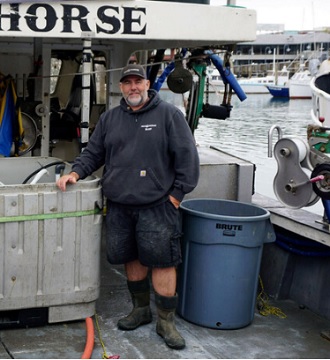
This fishing gear can help save whales. What will it take for fishermen to use it?
Fishing boats would normally still be unloading Dungeness crabs at San Francisco’s fisherman’s wharf in May. This year, the docks were quiet, except for one berth. “We’re the only boat right now,” says Brand Little, standing next to a large tank of bright red crabs on the deck of his boat, the Pale Horse. State regulators closed the Dungeness season two months early this year, due to the arrival of humpback whales in the area. On both the East and West Coasts, crab and lobster fishermen are seeing their fishing seasons shrink over concerns that whales are getting entangled in the long ropes attached to their gear, accidents that often end up injuring or killing the animals. Photos, >click to read< 08:08

Federal judges: Data does not prove Maine lobstering endangers whales
Friday, a panel of judges ruled that data on entanglements in lobster fishing gear does not support the need for the new strict limits on where and how lobstermen could fish. Those regulations, set by the National Marine Fisheries Service, were put in place under the authority of the Endangered Species Act to protect the 340 North Atlantic Right Whales whales left. The Maine Lobstermen’s Association says there is no evidence of Maine lobster gear ever killing a whale. There has been no documented entanglement of a North Atlantic Right Whale since 2004. “Every lobsterman in Maine was facing a decision of whether or not they would be able to continue in the fishery,” MLA policy director Patrice McCarron said. Video, >click to read< 08:55
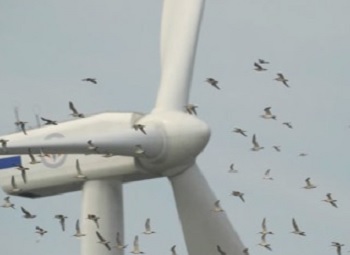
Global Wind Day, Environmental Nightmare
June 15 was Global Wind Day. Its European industry sponsors hope to promote the “power and possibilities” of wind turbines. But beware the Ides of June. Wind turbines have been sold to us as a means of reducing emissions, global warming and climate change. Although there are a lot of wind turbines installed around the world with many more seemingly to come, they have not reduced emissions, warming or climate change. And they offer no chance to do so, even if those things were desirable. Coming eight days short of the 35th anniversary of James Hansen’s Senate testimony that sent the world into global warming panic, it’s clear to anyone who cares to look that emissions have nothing to do with recent warming. >click to read< 08:55






